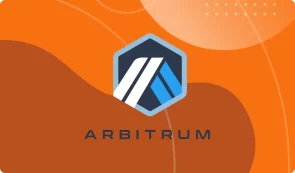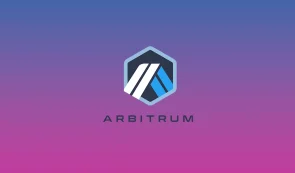What is Arbitrum
Arbitrum stands as a Layer 2 scaling solution for Ethereum, developed by Offchain Labs, a New York-based Ethereum startup. Its primary objective is to alleviate Ethereum’s growing pains by processing smart contract transactions on separate Arbitrum chains. With investments from notable firms such as Alameda Research, Pantera Capital, and Lightspeed Venture Partners, Arbitrum has gained significant attention in the blockchain space.
How Arbitrum Works: Optimistic Rollups and Virtual Machine
Arbitrum utilizes optimistic rollups and the Arbitrum Virtual Machine (AVM) to process transactions off-chain, settling them efficiently on the Ethereum mainchain. This is achieved by creating a sidechain linked to the Ethereum main chain and leveraging the AVM to compile batches of transactions.
Optimistic Rollups Explained
Optimistic rollups:
- Compress transactions and store necessary data on the Ethereum blockchain.
- Process transactions off-chain, verifying them on-chain only in case of disputes.
- Minimize transaction fees and reduce the burden on the Ethereum network, allowing for faster and cost-effective Ethereum transactions.
Arbitrum Virtual Machine (AVM)
The AVM is a crucial component that allows developers to deploy existing Ethereum smart contracts on Arbitrum with minimal modifications. Key features include compatibility with the Ethereum Virtual Machine (EVM), faster and cheaper transactions, seamless integration with existing Ethereum tooling, and advanced features for developers.
Benefits of Arbitrum’s Layer 2 (L2) Platform
Arbitrum’s Layer 2 platform provides several key benefits:
- Reduced Network Congestion and Transaction Costs:
- Takes over some workload and data storage from Ethereum’s mainnet (Layer 1).
- Mitigates network congestion and lowers transaction costs.
- Optimistic Rollups and Proprietary Virtual Machine:
- Combines the efficiency of optimistic rollups and a proprietary virtual machine (Arbitrum Virtual Machine – AVM).
- Enhances transaction processing efficiency and overall user experience.
The Need for Layer 2 Solutions
Ethereum faces challenges in transaction speed, high fees, and scalability bottlenecks. These limitations hinder the adoption of decentralized applications (dApps) on the Ethereum network, necessitating the exploration of Layer 2 solutions.
Arbitrum addresses these challenges by employing optimistic rollups, processing transactions off-chain to significantly reduce gas fees and transaction times. This makes Layer 2 solutions like Arbitrum crucial for enhancing Ethereum’s scalability and efficiency.
The Arbitrum Ecosystem: Main Components and Evolution
The Arbitrum ecosystem consists of three main components: Arbitrum One, Arbitrum Nitro, and Arbitrum Nova. As the ecosystem evolves, these components work together to provide a robust and scalable Layer 2 solution for Ethereum applications.
Arbitrum One
Arbitrum One is the official mainnet of the Arbitrum ecosystem, launched on August 31, 2021. It enhances user experience by reducing transaction costs and increasing transaction speed. Compatible with the EVM, it allows developers to deploy smart contracts seamlessly.
Arbitrum Nitro
Arbitrum Nitro enhances Arbitrum One’s infrastructure, increasing speed, EVM compatibility, and cost-efficiency. It implements interactive proofs running on WASM code, enabling developers to use standardized EVM-compatible languages and execute unmodified EVM contracts.
Arbitrum Nova
Arbitrum Nova is designed to facilitate applications with high transaction volumes on the Arbitrum network. Built on Arbitrum One, it offers increased scalability but sacrifices some security features for higher throughput in high-transaction-volume applications.
ARB Token: Governance and Utility
The ARB token is the native governance token for the Arbitrum blockchain, empowering holders to influence the platform’s development and benefit from its growth.
ARB Token Functions
- Transfer of Value:
- Facilitates secure and efficient value transfer within the Arbitrum ecosystem.
- Governance Voting:
- Token holders vote on governance decisions, including fund allocation, investments, and technical modifications.
- Security Council Election Decisions:
- Token holders participate in electing members for the Security Council, ensuring network security.
ARB Tokenomics
Key details about ARB tokenomics include an initial supply of 10 billion tokens, a 2% yearly inflation rate, and a distribution plan that incentivizes long-term holding and ecosystem participation.
Comparing Arbitrum to Other Layer 2 Solutions
Arbitrum is often compared to Optimism and ZK-Rollups, each offering unique approaches to Ethereum’s scalability challenges.
Arbitrum vs. Optimism
While both use optimistic rollups, Arbitrum employs multi-round fraud proofs off-chain, enhancing scalability. Optimism relies on single-round fraud proofs on Layer 1, offering faster transaction speeds but introducing delays for finality.
Arbitrum vs. ZK-Rollups
Arbitrum and ZK-Rollups aim to enhance scalability but use different techniques. ZK-Rollups leverage zero-knowledge proofs, offering stronger privacy guarantees but requiring more computational resources.

